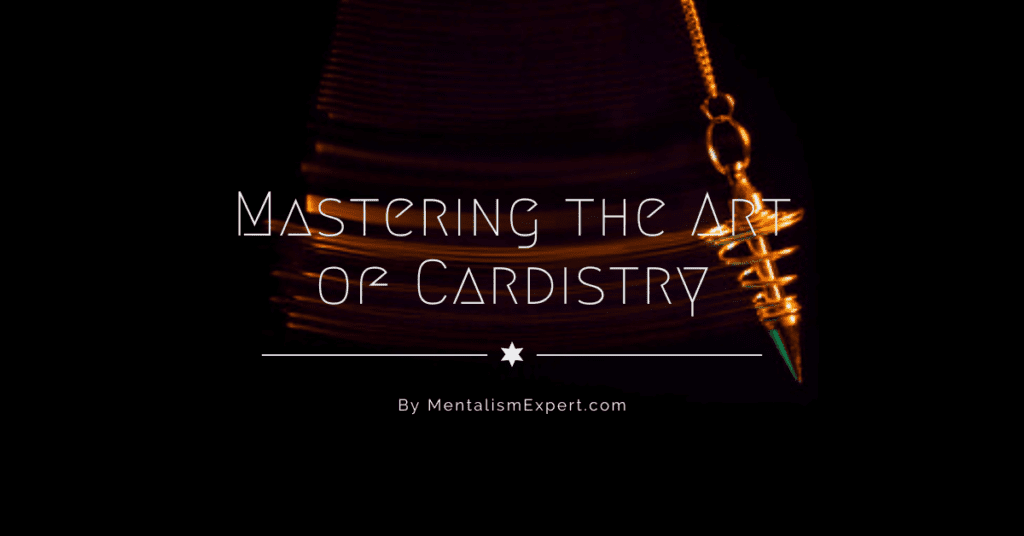Cardistry, also known as card flourishing, is the art of manipulating playing cards to create visually stunning displays and effects. It’s a relatively new form of performance art that has gained popularity in recent years, thanks to the internet and social media platforms. In this article, we will explore the basics of cardistry, including what it is, the importance of using the correct deck, and how to maintain your cards. We will also discuss common cardistry terms, five must-know beginner cardistry techniques, and tips on how to practice and improve your cardistry skills.
Key Takeaways
- Cardistry is the art of manipulating playing cards for visual displays.
- Quality of deck and maintaining them is important for cardistry
- Practice and joining a community can improve skills
- Using different decks can enhance card-handling skills
What is Cardistry?
Cardistry is the practice of manipulating playing cards to create visually stunning displays and effects. It’s a form of performance art that combines elements of magic, dance, and gymnastics. Cardists use their hands and fingers to control the movement of cards, creating patterns and designs that are both beautiful and mesmerizing.
Using the Correct Deck
When it comes to cardistry, the quality and handling of your deck are essential. It’s important to use a deck that is specifically designed for card flourishing, as they are usually made with high-quality card stock and has a smooth finish that makes them easy to handle. Using a low-quality deck can make cardistry more difficult and less enjoyable.
How to Maintain Your Cards
To ensure that your cards remain in the best condition, it’s important to take care of them properly. This includes keeping them clean and dry, avoiding bending or creasing them, and storing them in a protective case or deck box. It’s also a good idea to regularly shuffle and fan your cards to keep them from becoming stiff or sticky.
Common Cardistry Terms You Should Know
Cardistry has its own language and jargon, and it can be helpful to familiarize yourself with some of the common terms used in the community. Some of the most common cardistry terms include:
- Fan: A spread of cards that is used to display a large number of cards at once.
- Cut: A move where the cards are split into two or more packets and then recombined.
- Shuffle: A move where the cards are mixed together in a randomized order.
- Spread: A move where the cards are spread out in a fan or other pattern.
- Control: A move where the cards are controlled and manipulated to a specific location in the deck.
5 Must-Know Beginner Cardistry Techniques
- The Charlier Cut: This is a basic move that involves cutting the deck into two packets and then recombining them.
- The Thumb Fan: This is a basic move that involves fanning the cards out with your thumb.
- The Spring: This is a move where the cards are pushed out of the deck with a springing motion.
- The Waterfall: This is a move where the cards are spread out in a waterfall pattern.
- The One-handed Cut: This is a move where the cards are cut with one hand.
How to Practice Your Cardisty Skills
Practicing your cardistry skills is essential to becoming proficient in the art. A good way to practice is to start with basic moves and then gradually work your way up to more advanced techniques. It’s also important to pay attention to your form and posture, as this can affect the smoothness and fluidity of your movements.
5 Tips on Improving Your Cardistry Skills
- Practice regularly: The more you practice, the better you will become.
- Watch tutorials and videos: There are many tutorials and videos available online that can help you learn new techniques and improve your skills.
- Join a community: Joining a community of other cardists can be a great way to learn new techniques and get feedback on your own cardistry.
- Use different decks: Experimenting with different types of decks can help you learn how to handle different types of cards and improve your overall card-handling skills.
- Take care of your cards: Keeping your cards in good condition is essential to maintaining the quality of your cardistry.
Final Thoughts
Cardistry is a beautiful and mesmerizing art form that combines elements of magic, dance, and gymnastics. It’s a skill that takes practice and dedication to master, but with the right approach, anyone can learn how to create stunning card flourishes and displays. Whether you’re a beginner or an experienced cardist, there’s always something new to learn and discover in the world of cardistry. Want to learn more about cards? Learn all about the history of playing cards and some cool card tricks for beginners, and start becoming the expert you can be!
FAQ
What is Cardistry?
Cardistry is the practice of manipulating playing cards to create visually stunning displays and effects.
Is there a specific type of deck required for cardistry?
It’s important to use a deck that is specifically designed for card flourishing, as they are usually made with high-quality card stock and has a smooth finish that makes them easy to handle.
Is cardistry similar to magic?
Cardistry and magic are similar in that both involve the manipulation of objects to create illusions, but the main focus of cardistry is on creating visually stunning displays and effects, while magic typically focuses on performing tricks and illusions.
How to maintain the cards for cardistry?
To ensure that your cards remain in the best condition, it’s important to take care of them properly. This includes keeping them clean and dry, avoiding bending or creasing them, and storing them in a protective case or deck box.
Are there any specific postures or forms that should be maintained while doing cardistry?
Yes, paying attention to your form and posture can affect the smoothness and fluidity of your movements.








